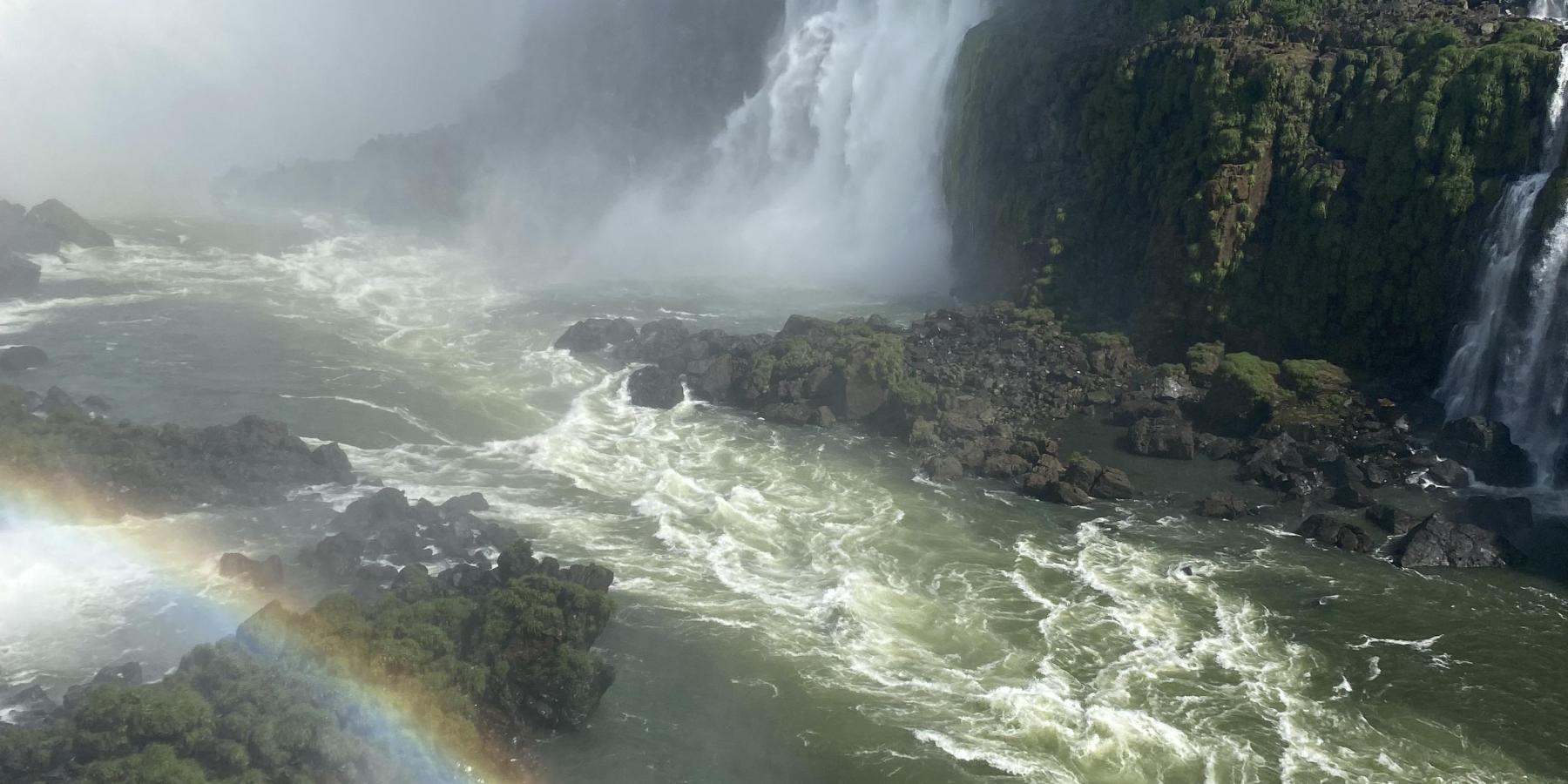Iguazu Falls: A Breath Taking Adventure
Support
Ever since I had heard tales of these magical waterfalls from friends and family, it had been a dream of mine to visit them. The Falls encompass 275 individual falls, and border Paraguay, Argentina, Brazil, making them the largest waterfall chain in the world. I can now attest, they are breathtaking and undoubtedly deserving of their high praise.
I felt enchanted as I froliced down the waterfall’s path. I could not help but walk through with my mouth ajar. The overwhelming, everpresent crash of the water and the engulfing mist creates a truly magical immersive experience as you become a part of the tumbling cascades. I remember how everyone stood immobile from sheer infatuation with each and every cascade. The only reason the group wielded the mortal power to progress along the path was the assurance that the next cascade would be equally if not more impressionable than the last.
On my trip I learned that on average the waterfalls flow 396,258 gallons of water per second (Labrador, 2022); however, occurrences of extreme polizared climate have been deleterious to the water cycle. Severe weather ranging from extreme rainfall and flooding to extreme heat waves and droughts destabilize the Iguazu ecosystem. The Iguazu River is a main source of water to the Falls. In 2020 an uncharted drought diminished the enormous cascades to mere trickles. Iguazu National Park officials reported the river at 13% of its regular flow (Valente, 2020). Conversely, in June 2022 torrential rainfall generated a flow surge five times greater than average. Furthermore, in October of 2022 the flow rate was ten times greater than average (Labrador, 2022). The World Heritage Outlook’s latest assessment concluded the conservation status for Iguazu Falls as "significant concern". In addition to climate change, Iguazu has experienced unnatural changes in river levels due to the operation of dams on the upper Iguazú River, which is also harmful to the Falls ecosystem. Moreover, illegal desforestation removes roots for the riverbanks, which once held sediment inplace. In combination with magnified rainfall, sediment increases in the water (World Heritage Outlook, 2020). If attention is not paid to climate change and a plan for the preservation of this natural wonder, in lieu of the current majestic cascades a new cascade may follow: No water. No waterfalls. No ecosystem. No tourism. No jobs.
I am grateful to better understand the encroaching environmental developments and I am hopeful that through the media, tourism, and the publication of academic research that precautionary and affirmative steps can be taken to ameliorate and protect the negative impact of climate change on the fragile Iguazu ecosystem.
My experience at Iguazu was a highlight of my semester abroad in Argentina. I feel incredibly fortunate to have seen the magnificently glorious Falls firsthand. This adventure would not have been possible without the the generosity of the Giltz, DeLauder & McCullough International Travel fun. I am sincerely appreciative for the opportunity to partake in this absolutely surreal experience. Thank you for actualizing this dream.

